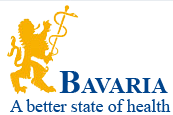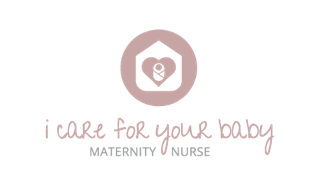PREGNANCY
Individual health counseling and nutritorial advice
If you want to learn more about check-ups, click on one of the topics below.
Medical care for normal and high-risk pregnancies
Medical care for normal and high-risk pregnancies
We place a large emphasis on comprehensive care and advice during the entire pregnancy. In addition to medical care we can offer you cooperation with experts of other fields.
The examinations during pregnancy are performed according to the maternity regulations. In addition, we provide you with further reasonable examinations which are currently not part of these regulations.
-
Blood sugar stress test
-
Blood test for HIV, toxoplasmosis, cytomegaly and listeriosis
-
First trimester screening to assess the individual risk of genetic diseases
-
ultrasound scans pursuant to maternity regulations
-
ultrasound scan of breasts during pregnancy
The maternity check-ups are performed every four weeks, then – as of the 30th week of pregnancy – every three weeks and then – as of the 36th week – every two weeks.
As of the calculated delivery date, check-ups are performed every two days. In order to ensure proper documentation of the examination results, so-called maternity notes are taken as of the 8th and 12th week of pregnancy. You should always take them with you and bring them to each appointment in our practice.
Moreover, we recommend cancer screening at 6-month intervals during pregnancy (paid for by the statutory health insurance).
In case of high-risk pregnancies, the entire range of prenatal diagnosis can be offered (please click to choose). This involves:
-
malformation screening
-
chorionic villus sampling
-
amniocentesis
-
umbilical blood sampling
-
nuchal scan
-
Doppler sonography
-
human genetic counselling
Malformation screening
Malformation screening
Ultrasonic examinations between the 19th and 22nd week of pregnancy can detect many developmental disorders, among them a number of foetal malformations and diseases. The criteria of the assessment are, for example, the face, head, spine, abdominal wall, extremities and individual foetal organs. An ultrasonic examination with normal results confirms with high probability a normal development of the foetal organ; however, it can never exclude disorders in the foetal development with certainty.
Even when the examination is carried out with high-quality devices and utmost care by an experienced doctor, it cannot be expected that all malformations and modifications can be detected at any time during pregnancy because some anomalies only develop during the course of pregnancy. The assessment of the unborn child may be difficult due to unfavourable examination conditions, e.g. low level of amniotic fluid, unfavourable position of the child, too early or too late in pregnancy, strong maternal abdominal wall, scars. Thus, a residual risk at a percent level for developmental disorders still remains.
If a malformation is diagnosed, we can offer you cooperation with experts in the respective field (e.g. paediatricians, paediatric cardiologists, human geneticists, psychologists).

fig.: normal four-chamber view of the foetal heart in the 20th week of pregnancy
Chorionic villus sampling
Chorionic villus sampling
Chorionic villus sampling (CVS) is the earliest possible examination in invasive diagnostics. As the nuchal fold scan, it is usually performed between the 11th and 14th week of pregnancy. For example amniocentesis is usually not yet possible at such an early stage. This is the reason why CVS is recommended when an early or fast diagnosis is required, e.g. in the following cases:
-
in case of abnormal ultrasound scan results in the first trimester of pregnancy
-
if diseases which can be detected with invasive diagnostics are known in the family history
-
if the mother wishes to have a diagnosis as early as possible, e.g. in case of advanced maternal age
-
if early screening indicates an increased risk
The foetal cells obtained from the placenta will be cultivated in a culture. Since the chorionic villi contain a large amount of cells in the cell division stage (only in this phase, chromosomes can be seen under a light microscope), a sample of the tissue is cultivated for about 24 hours and then processed for microscopic examination.
This ensures that chromosomes can be examined immediately and first results are available within 1-2 days (short-term results). In most cases such findings are already diagnostically conclusive. However, fine structural anomalies or the so-called mosaicism (the simultaneous presence of healthy and sick cells in one organism) cannot be recognised or excluded with certainty.
Long-term cultivation which is available after about one week will then reveal results with the highest possible informative value.
Since in chorionic villus sampling no amniotic fluid can be extracted for measuring the alpha-1-fetoprotein (AFP)in order to detect any open neural tube defects in the vertebrae or the skull, an AFP screening should be performed from the mother’s blood in the 16th – 18th week of pregnancy and/or an ultrasound scan should be made in the 20th -22nd week in order to exclude such defects as far as possible.
CVS procedure
You will first have an extensive talk with your doctor, who will inform you about the performance, significance, limitations and risks of the intended examination.
After an extensive ultrasound scan of the unborn child, the position of the placenta and the form of the uterus are assessed. Then the doctor determines the best puncture site which will usually be within the area displayed on the picture below.

Then, after thorough disinfection of the abdominal wall twice and under continuous ultrasound guidance, a very thin needle will be inserted through your abdominal wall and into the placenta and the chorionic villi will be extracted into a syringe with a culture medium. The sample is then immediately checked to confirm that a sufficient amount has been extracted.
The puncture itself usually takes only about 20 seconds. The pain caused by the procedure (usually just a discomforting pinching in the abdominal area which women often compare to menstrual pain) is very little so that local anaesthesia is not necessary.
Behaviour after the puncture
After the puncture you should rest and lie down at home for the rest of the day; and for the following three days you should also stay at home and take it easy.
Examination of amniotic fluid
Examination of amniotic fluid (amniocentesis)
Hardly any other examination in the field of prenatal screening has been distorted as much by exaggerations, half-truths and self-proclaimed experts as the examination of amniotic fluid (amniocentesis). On the internet, you can often find complication rates of 2% to 4%. Many expectant parents believe that one of the greatest risks of amniocentesis is the risk of injury to the foetus with the needle. However, objective and sound information on amniocentesis can answer many questions and also dispel the expectant parents’ fears.
Of course, no presentation on the internet whatsoever can ever replace a personal consultation, e.g. consultation within human genetic counselling.
Amniocentesis is usually performed between the 14th and the 19th week of pregnancy in order to detect chromosomal abnormalities. Foetal cells in the amniotic fluid are withdrawn and cultivated in a culture. After approx. 8 – 12 days, the chromosome set of the unborn child can usually be determined.
The chromosomal analysis is aimed at detecting chromosomal defects in terms of the number of chromosomes (the best-known defect is the Down syndrome = trisomy 21, previously known as mongolism) and structural chromosomal alterations visible under a light microscope. However, finer structural alterations can usually not be detected; further examinations with special markers will only be performed in case of suspected defects.
Moreover, the level of alpha-1-fetoprotein (AFP) in the amniotic fluid is measured to identify any neural tube defects of the spine (spina bifida = “split spine”) or the abdominal wall.
In special cases or upon request, an additional rapid test (FISH) can be offered to definitely rule out the three most common chromosomal defects after 24 hours already.
Amniocentesis may also be necessary for a diagnosis in case of other diseases (e.g. infections, inherited metabolic diseases, hereditary diseases known in the family history, blood type incompatibility).
A normal set of chromosomes does not exclude many malformations and diseases of the unborn child, e.g. heart defects, limb defects, facial clefts as well as many mental disabilities, because these are not linked to recognisable chromosomal abnormalities. Most of these diseases may, however, be recognised in a high-resolution ultrasound scan (the best time for such scan is between the 20th and 22nd week of pregnancy).
Procedure:
You will first have an extensive talk with your doctor, who will inform you about the performance, significance, limitations and risks of the intended examination.
After an extensive ultrasound scan of the unborn child, the position of the child and the size and expansion of the amniotic sac are assessed. Then the doctor determines the best puncture site which will usually be within the area displayed on the picture below.

Then, after thorough disinfection (three times) of the abdominal wall and under continuous ultrasound guidance, a very thin hollow needle will be inserted through your abdominal wall and into the amniotic sac in a way that excludes any injury to the foetus. A small amount of amniotic fluid (approx. 10-15 ml, less than a tenth of the total amount) will be extracted with the needle. This procedure usually takes about 20 seconds. The discomfort caused by amniocentesis can be compared to that of taking blood samples or intramuscular injections. Local anaesthesia is not necessary. The amniotic sac will have replenished the liquid within a few hours.
Behaviour after the puncture
After the puncture you should rest and lie down at home for the rest of the day; and for the following three days you should also stay at home and take it easy.
Indications to amniocentesis or chorionic villus sampling
Indications for amniocentesis or chorionic villous sampling
-
familial risk (e.g. a child with Down syndrome in the family)
-
mother aged 35 and older
-
chromosomal defect or other syndrome in a previous pregnancy
-
mother’s fear
-
mother’s wish
“Age indication” (mother aged 35 and older) means that a woman’s individual risk of giving birth to a child with a chromosomal defect increases in line with the mother’s age. The most common defect is the Down syndrome with an additional chromosome 21. The following table shows the relation between the risk and the maternal age.
| maternal age | Down syndrome risk |
| 20 | 1 out of 1530 |
| 25 | 1 out of 1350 |
| 30 | 1 out of 900 |
| 32 | 1 out of 660 |
| 34 | 1 out of 450 |
| 35 | 1 out of 360 |
| 36 | 1 out of 280 |
| 38 | 1 out of 170 |
| 40 | 1 out of 100 |
| 42 | 1 out of 55 |
| 44 | 1 out of 30 |
When the mother is around 35 years old, her individual risk to have a child with Down syndrome is higher than the risk posed by performing an amniocentesis (risk approx. 1:300 – 1:400). This is the reason why, in the past, a clear distinction was made between “over 35” and “under 35”.

Nowadays, however, this approach has been abandoned in favour of an individual interpretation. More and more often, the indication for an invasive testing is given when, after extensive counselling, the patient deems such testing reasonable for her individual situation.
Complications and limitations
An amniotic fluid leakage (rupture of the amniotic sac) occurs in about one out of 200 punctures. In about half of all cases, the leak closes itself naturally and the lost fluid regenerates itself so that the pregnancy continues as normal. In the other half of all cases, i.e. in one out of 300-400 amniotic punctures (0.2-0.3%), miscarriage or premature delivery due to a rupture of the amniotic sac, preterm labour or bleeding occurs. Maternal risks such as infections and bleeding are, however, very low.
Foetal blood sampling from the umbilical cord
Umbilical Cord Blood Sampling (Cordocentesis)
An umbilical cord puncture provides a means of rapid analysis with regard to haemoglobin, blood type, antibodies, infectious parameters of the child and, if needed, a karyogram (genetic analysis).
The procedure is similar to that of amniocentesis. A needle is inserted through your abdominal wall and into the amnion into the umbilical cord in order to extract foetal blood. The foetal umbilical vein is specifically selected for the puncture.
In addition to the above findings, testing the foetal blood can also exclude a range of infections. In case of blood deficiency a blood transfusion can be given. The most common indications for an umbilical cord puncture are suspected foetal blood deficiency due to rhesus incompatibility or infections.
Umbilical cord blood sampling makes the same genetic testing of the child possible as it is done in amniocentesis. An umbilical cord puncture can be performed in the 18th week of pregnancy at the earliest.
Nuchal screening
Nuchal scan
Nuchal translucency measurement is carried out by an ultrasonic scan of the fluid behind the neck of the foetus known as the nuchal fold. The scan is carried out between the 11th and 14th week of pregnancy. Foetuses with trisomy 21 (Down syndrome) tend to have a larger nuchal fold. A normal nuchal fold does, however, not prove that there is definitely no Down syndrome!
Measuring the nuchal translucency can detect whether or not your child is likely to suffer from a genetic disease such as trisomy 21 or trisomy 18. The scan can only estimate the risk for trisomy 21.
This measurement is combined with blood sampling (PAPP-A and ß-HCG). This increases accuracy up to 94%.
An accurate statement on trisomy 21 can only be given by e.g. chorionic villus sampling (CVS) or an examination of amniotic fluid (amniocentesis). This means that even after the nuchal scan it is not 100% clear whether or not your baby suffers from trisomy 21. However, this scan can help you to decide whether you want to have another diagnostic test later, e.g.an examination of the amniotic fluid.
After the 14th week of pregnancy, the lymphatic fluid is reduced in all babies. This examination will not carry any increased risk to you or your child.
3D/4D images and videos of your child on photo, CD, DVD or USB stick
3D/4D images and videos of your child on photo, CD, DVD or USB stick
Genetic counselling and analyses
Genetic counselling and analyses
In human genetic counselling, we cooperate with several experts.
About 3-4% of all children are born with a genetic disease, deformity or disability. The standard example of genetic counselling is the case when persons within your family have a certain deformity or possibly a genetic disease or when you already have a child with a hereditary disease and want to know how high the risk is to have another child who is affected. Genetic counselling will inform you about the risk of falling ill with the disease, the course of the disease and diagnostic options. Genetic counselling will help you make your individual decision in a specific situation, also with regard to family planning. The consultation session usually takes between 30 minutes and one hour.
What are hereditary diseases?
There are over 7000 hereditary diseases known and approx. 1000 of them can be detected via genetic diagnosis. This number will be even higher in future.
The reason of a hereditary disorder lies in a modification of the genetic material (the DNA). Such modification may affect individual genes (gene mutations) or entire chromosomes (chromosomal disorders). A hereditary disease is likely if several members of one family in the same or different generations have fallen ill with the same disorder. Hereditary diseases can also occur for the first time due to a sudden modification of the genetic material (spontaneous mutation).
Genetic counselling is advisable in the following cases:
-
if the mother or the father is of a higher age
-
prior to invasive diagnostics (amniocentesis, chorionic villus sampling, foetal blood sampling)
-
following medication or exposure to radiation during pregnancy
-
in case of repeated miscarriages
-
in case of consanguineous marriages
-
in case of suspicious ultrasonic results
-
in case of suspicious screening test results (early screening, triple test)
-
in case of certain maternal diseases (e.g. epilepsy)
-
if a hereditary disease is suspected in a family member, in order to assess the risk of repetition
-
in case of general questions concerning prenatal diagnosis
-
if artificial insemination is planned
The costs of human genetic counselling are borne by the statutory and private health insurances. Members of the statutory health insurance need a referral from their doctor.
Counselling may also reveal that e.g. a blood test of your partner is necessary.
In-patient and out-patient births at the gynaecological hospital
Obstetrics, surgical and
conservative in-patient treatment
are performed upon appointment:
near the English Garden
Hirschauer Str. 6
80538 Munich
Phone: (089) 38 31-0
Fax: (089) 38 31-263


surgical spectrum:
- diagnostic and interventional laparoscopy
- sterility testing (chromopertubation)
- diagnostic hysteroscopy and hysteroscopic surgery
- laparotomy
- hysterectomy (abdominal, in some cases vaginal)
- incontinence surgery
- curettages, dilatation and curettage abortion
- conization
- breast surgery together with the breast centre of the hospital Dr. Geißenhofer in Munich
In order to discuss and plan surgery which is to be carried out by us, please make an appointment in our practice first.






